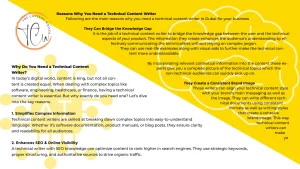Content quality matters in SEO. It is essential for optimizing your website for top rankings. You need SEO content to ensure that your website ranks well. Content quality analysis and optimization are important for that.
We are going to give you tips to evaluate the SEO-friendliness of your website content in this guide. We are also going to provide actionable insights for content optimization. Learning the result-driven insights provided here can enhance your website’s performance and visibility.
How to Check Your Website Content is SEO-Friendly
SEO-optimized content is the key to success in the competitive digital space. Website Content Writing Service can help you ensure that. Still, to make things easier, here is how can check SEO quality of your content:
Analyze Content Titles
Crafting compelling and relevant titles is important in SEO. They capture the attention of both search engines and users. Make sure that your content titles contain your target keyword.
Analyze Headings
Headings play a crucial role in structuring your content. Make sure that all your target keywords appear in key headings withing your content. Use a reasonable number of H2 and H3 headings to make your content optimized.
Analyze Content
This is the most important step of the analysis phase. Go over your content and make sure that it has all the right keywords. You need to look for keyword stuffing and avoid that. Make sure the content is valuable so that it resonates with your audience.
Track Content Performance on SERPs
Monitoring your content’s performance on search engine results pages is important. It helps refine your SEO strategy. Use analytics tools to track the visibility of your content. It gives you an idea about the performance of your content.
Check Readability
Content readability affects SEO performance. Use readability apps or plugins to check the score for your content. Too low score would mean you might want to rethink your readability metric.
How to Optimize Your Content to Make it SEO-Friendly
Here’s an in-depth exploration of key strategies to effectively optimize your content for maximum SEO impact:
Conduct Keyword Research
Start your optimization journey by delving into comprehensive keyword research. Identify high-volume keywords to target in your content. Also look at long-tail variations that align with your content’s focus. SEO Content Writing service can help you find the right keywords for your content.
You can use utilize keyword research tools to speed up the process. Ahrefs and Google Planner are a great way to go. SEMrush is useful too. They can tell you about search trends and user intent. Consider exploring semantic keywords to enhance the contextual relevance of your content.
Choose the Right Content Structure
Crafting an organized and logical content structure is important. It affects user experience and search engine visibility. Use headings to set up the content. Use bullet points to break down your content into smaller sections.
This approach enhances readability for your audience. It also aids search engine crawlers in comprehending the hierarchy of information. Implementing a well-defined content structure facilitates the creation of featured snippets. They increase the likelihood of your content being highlighted in search results.
Add Keyword in Title & Headings
Content writers should add target keywords in the title and headings. This step reinforces the relevance of your content. Crafting an engaging and keyword-rich title can significantly impact click-through rates.
Headings also provide an additional layer of context. Experiment with variations of your primary keywords to cater to diverse search queries and capture a broader audience.
Keyword Incorporation in the Content
Beyond the title and headings, integrate your selected keywords seamlessly throughout your content. Focus on maintaining a natural flow that enhances the overall quality of your writing.
Aim for an optimal keyword density that signals relevance without compromising the readability and user experience. Utilize variations of your main keywords to capture different search intents, providing more comprehensive coverage of your topic.
Internal Linking
Improve your content’s SEO value by strategically incorporating internal links. You should link a landing page with other relevant pages within your website. This facilitates user navigation.
It also establishes a network of connections that search engine algorithms use to assess the different pages on your website. Experiment with anchor texts to provide additional context to SERPs.
Meta Description Optimization
Craft compelling and concise meta descriptions. They should encapsulate the essence of your content. Make the most of this space to summarize your main points. This can also entice users to click through.
Include relevant keywords in the meta description. It contributes to the overall coherence and discoverability of your content on SERPs. Use different calls-to-action and unique selling propositions to make your meta descriptions unique.
Image Optimization
Optimize the images within your content for SEO. Assign them descriptive file names and alt text containing relevant keywords. Additionally, compressing images aids in reducing page load times, a crucial factor in both user experience and search engine rankings.
Striking a balance between visual appeal and optimization is key. Consider creating an image sitemap to enhance the discoverability of your visual content by search engines.
SEO-Friendly URLs
Construct clean and descriptive URLs. They offer users and search engines a clear context of your topic. Incorporate relevant keywords when possible. Make sure to steer clear of complex or convoluted URL structures.
A well-crafted URL is great for enhancing click-through rates. It helps in accurate indexing of your content. Implement 301 redirects for any outdated URLs. They ensure a seamless user experience and prevent broken links.
Conclusion
This comprehensive guide has introduced you to the key strategies for crafting SEO-friendly content. Strategic keyword research and thoughtful content structuring are the key steps of it. Whether you’re fine-tuning meta descriptions or ensuring SEO-friendly URLs, each element contributes to an enhanced user experience.




